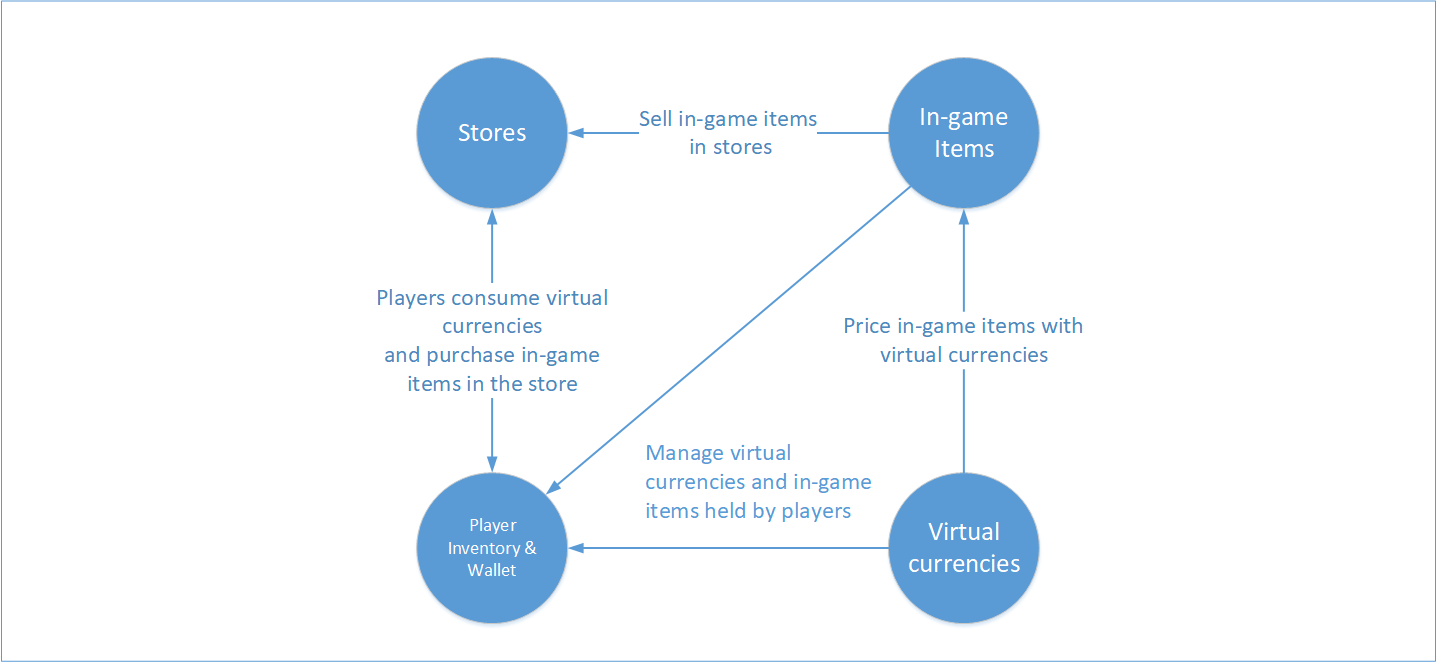Overview
PGOS provides a series of services to help you build a in-game economy, including virtual currencies, in-game items, stores, and inventory. This article will provide an overview of the method by which you can use these services to build a in-game economy system.
- Virtual Currency: Virtual currencies are used to set the prices of in-game items. Players can hold currency and use it to purchase items. You can use game servers or virtual servers to enrich the gameplay by adding to or subtracting from the virtual currency held by players.In subsequent versions, PGOS will integrate the Midas payment system to support paid currencies and purchases using real currencies.
- In-game Items: You can define in-game items to build a set of items used in your in-game economy.In-game items can be purchased in stores or granted to players through game servers and virtual servers. Some types of in-game items can be instantiated in the player inventory, giving the player possession of them.
- Stores: Stores maintain a subset of items. You can set store-specific item prices. Players can purchase items from stores.
- Player Inventory: Each player who logs into PGOS has an individual inventory that holds all the item instances possessed by the player.
- Player Wallet: Each player who logs into PGOS has an individual wallet that holds all the virtual currencies possessed by the player.
The figure below shows how the various modules are connected. Reading this example will help you quickly learn how a in-game economy works.
